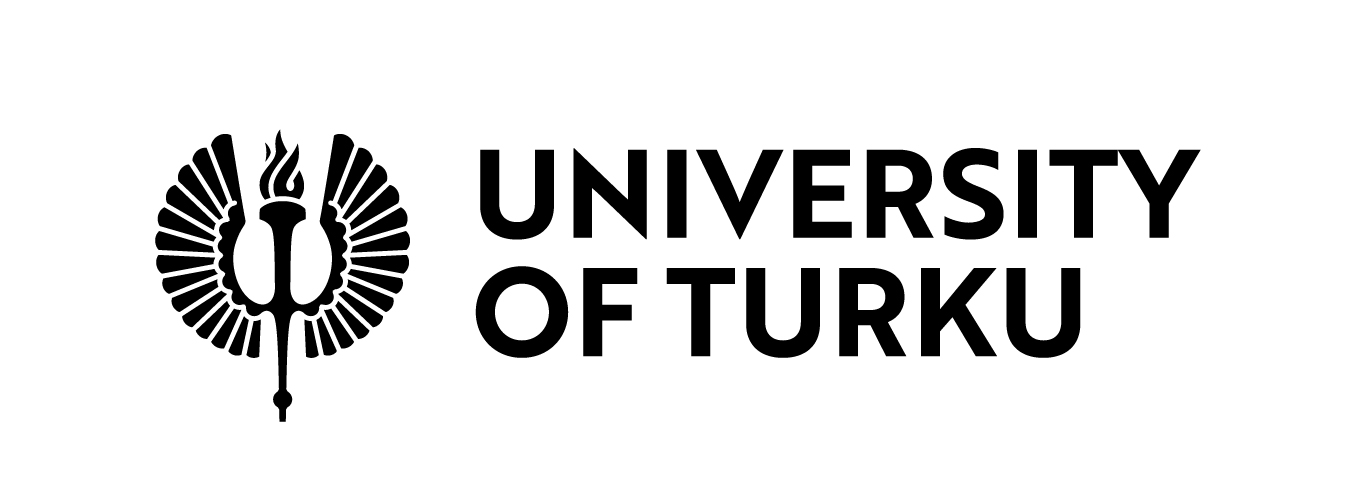Following fields are empty!
Nanoscale Advances is an international gold open access journal, publishing high-quality research across the breadth of nanoscience and nanotechnology. The journal accepts experimental and theoretical work in the form of communications, full papers and reviews, building on and complementing the nano content already published across the Royal Society of Chemistry journal portfolio. Topics include, but are not limited to: synthesis of nanostructured and nanoscale materials; quantum materials; 2D materials; layered materials; layered quantum materials; characterisation of functional nanoscale materials and bio-assemblies; properties of nanoscale materials; self-assembly and molecular organisation; complex hybrid nanostructures; nanocomposites, nanoparticles, nanocrystalline materials, and nanoclusters; nanotubes, molecular nanowires and nanocrystals; molecular nanoscience; nanocatalysis; theoretical modelling; single-molecules; plasmonics; Nanoelectronics and molecular electronics; nanophotonics; nanochips, nanosensors, nanofluidics and nanofabrication; carbon-based nanoscale materials and devices; biomimetic materials; nanobiotechnology/bionanomaterials; nanomedicine; regulatory approaches and risk assessment
Nanoscale Horizons
Nanoscale Horizons is a leading journal for the publication of exceptionally high-quality, innovative nanoscience and nanotechnology. The journal places an emphasis on original nano research that demonstrates a new concept or a new way of thinking (a conceptual advance), rather than primarily reporting technological improvements. However, outstanding articles featuring truly breakthrough developments such as record performance alone may also be published in the journal. Topics covered in the journal include, but are not limited to: synthesis of nanostructured and nanoscale materials; quantum materials; 2D materials; layered materials; characterisation of functional nanoscale materials and bio-assemblies; properties of nanoscale materials; self-assembly and molecular organisation; complex hybrid nanostructures; nanocomposites, nanoparticles, nanocrystalline materials, and nanoclusters; nanotubes, nanowires and nanocrystals; molecular nanoscience; nanocatalysis; theoretical modelling; single-molecules; plasmonics; nanoelectronics and molecular electronics; nanophotonics; nanochips, nanosensors, nanofluidics and nanofabrication; carbon-based nanoscale materials and devices; biomimetic materials; nanobiotechnology and bionanomaterials; nanomedicine; regulatory approaches and risk assessment.
Nanoscale and Microscale Thermophysical Engineering
Nanoscale and Microscale Thermophysical Engineering is a journal covering the basic science and engineering of nanoscale and microscale energy and mass transport, conversion, and storage processes. In addition, the journal addresses the uses of these principles for device and system applications in the fields of energy, environment, information, medicine, and transportation.
The journal publishes both original research articles and reviews of historical accounts, latest progresses, and future directions in this rapidly advancing field. Papers deal with such topics as:
- transport and interactions of electrons, phonons, photons, and spins in solids
- interfacial energy transport and phase change processes
- microscale and nanoscale fluid and mass transport and chemical reaction
- molecular-level energy transport, storage, conversion, reaction, and phase transition
- near field thermal radiation and plasmonic effects
- ultrafast and high spatial resolution measurements
- multi length and time scale modeling and computations
- processing of nanostructured materials, including composites
- micro and nanoscale manufacturing
- energy conversion and storage devices and systems
- thermal management devices and systems
- microfluidic and nanofluidic devices and systems
- molecular analysis devices and systems
Publication office: Taylor & Francis, Inc., 530 Walnut Street, Suite 850, Philadelphia, PA 19106
Nanoscience and Nanotechnology-Asia
Nanoscience & Nanotechnology-Asia publishes expert reviews/ mini reviews, original research articles, letters and guest edited issues on all the most recent advances in nanoscience and nanotechnology with an emphasis on research in Asia and Japan. All aspects of the field are represented including chemistry, physics, materials science, biology and engineering mainly covering the following; synthesis, characterization, assembly, theory, and simulation of nanostructures (nanomaterials and assemblies, nanodevices, nano-bubbles, nano-droplets, nanofluidics, and self-assembled structures), nanofabrication, nanobiotechnology, nanomedicine and methods and tools for nanoscience and nanotechnology.
Nanotechnologies in Russia
Nanotechnologies in Russia (Rossiiskie Nanotekhnologii) focuses on publication of the interdisciplinary articles devoted to basic issues of the structure and properties of nanoscale objects and nanomaterials, technologies of their production and processing as well as practical implementation of the devices and facilities on their basis. The journal publishes original articles meeting the highest scientific criteria that cover research in the following areas of science and technology: self-organizing structures and nanoassemblages, nanostructures including nanotubes, functional nanomaterials, structural nanomaterials, devices and facilities on the basis of nanomaterials and nanotechnologies, metrology, standardization, and testing in nanotechnologies, nanophotonics, nanobiology.
Nanotechnology
Nanotechnology aims to publish original research at the forefront of nanoscale science and technology across all disciplines. The journal’s scope encompasses the study of both fundamental phenomena at the nanoscale and applications of these phenomena. ‘Nanotechnology’ is taken to include the ability to individually address, control, and modify structures, materials and devices with nanometre precision, and the synthesis of such structures into systems of micro- and macroscopic dimensions such as MEMS based devices.
To be publishable in the journal, articles must meet the highest scientific quality standards, contain significant and original new science, and make substantial advances in nanoscale science and technology. Research on the synthesis of materials should contain a significant innovation either in methodology, materials or demonstrated application. To ensure high editorial standards, every submitted article is initially assessed by the editors of the journal before being sent to independent referees. Articles can be rejected without refereeing after this initial assessment by the editors. Due to the high volume of papers that we receive, we regret that we are unable to provide feedback on individual articles. Authors appealing against the decision will have to demonstrate to the Editorial Board of the journal at nano@ioppublishing.org that their paper contains significant new science of high quality and interest.
Nanotechnology Perceptions
Nanotoxicology
National Academy Science Letters
Natural Hazards Review
Nature Biomedical Engineering
Launched in January 2017, Nature Biomedical Engineering publishes original research, reviews and commentary of high significance to the biomedical engineering community, including bench scientists interested in devising materials, methods, technologies or therapies to understand or combat disease; engineers designing or optimizing medical devices and procedures; and clinicians leveraging research outputs in biomedical engineering to assess patient health or deliver therapy across a variety of clinical settings and healthcare contexts.
Like all Nature-branded journals, Nature Biomedical Engineering is run by a dedicated team of professional editors, and provides fair and rigorous peer review, high standards of copy-editing and production, swift publication and editorial independence.
Nature Electronics
Nature Materials
Nature Materials is a monthly multi-disciplinary journal aimed at bringing together cutting-edge research across the entire spectrum of materials science and engineering. Materials research is a diverse and fast-growing discipline, which has moved from a largely applied, engineering focus to a position where it has an increasing impact on other classical disciplines such as physics, chemistry and biology. Nature Materials covers all applied and fundamental aspects of the synthesis/processing, structure/composition, properties and performance of materials, where "materials" are identified as substances in the condensed states (liquid, solid, colloidal) designed or manipulated for technological ends.Nature Materials provides a forum for the development of a common identity among materials scientists while encouraging researchers to cross established subdisciplinary divides. To achieve this, and strengthen the cohesion of the community, the journal takes an interdisciplinary, integrated and balanced approach to all areas of materials research while fostering the exchange of ideas between scientists involved in the different disciplines. Nature Materials is an invaluable resource for all scientists, in both academia and industry, who are active in the process of discovering and developing materials and materials-related concepts.Nature Materials offers an engaging, informative and accessible product including papers of exceptional significance and quality in a discipline which promises to have great influence on the development of society in years to come.Research areas covered in the journal include:* Engineering and structural materials (metals, alloys, ceramics, composites)* Organic and soft materials (glasses, colloids, liquid crystals, polymers)* Bio-inspired, biomedical and biomolecular materials* Optical, photonic and optoelectronic materials* Magnetic materials* Materials for electronics* Superconducting materials* Catalytic and separation materials* Materials for energy* Nanoscale materials and processes* Computation, modelling and materials theory* Surfaces and thin films* Design, synthesis, processing and characterization techniquesIn addition to primary research, Nature Materials also publishes review articles, news and views, research highlights about important papers published in other journals, commentaries, correspondence, interviews and analysis of the broader materials picture. In this way, the journal aims to be the voice of the worldwide materials science community.Nature Materials offers readers and authors high visibility, access to a broad readership, high standards of copy editing and production, rigorous peer review, rapid publication, and independence from academic societies and other vested interests.
Nature Nanotechnology
Nature Nanotechnology is a multidisciplinary journal that publishes papers of the highest quality and significance in all areas of nanoscience and nanotechnology. The journal covers research into the design, characterization and production of structures, devices and systems that involve the manipulation and control of materials and phenomena at atomic, molecular and macromolecular scales. Both bottom-up and top-down approaches - and combinations of the two - are covered.Nature Nanotechnology also encourages the exchange of ideas between chemists, physicists, material scientists, biomedical researchers, engineers and other researchers who are active at the frontiers of this diverse and multidisciplinary field. Coverage extends from basic research in physics, chemistry and biology, including computational work and simulations, through to the development of new devices and technologies for applications in a wide range of industrial sectors (including information technology, medicine, manufacturing, high-performance materials, and energy and environmental technologies). Organic, inorganic and hybrid materials are all covered.Research areas covered in the journal include:* Carbon nanotubes and fullerenes* Computational nanotechnology* Electronic properties and devices* Environmental, health and safety issues* Molecular machines and motors* Molecular self-assembly* Nanobiotechnology* Nanofluidics* Nanomagnetism and spintronics* Nanomaterials* Nanomedicine* Nanometrology and instrumentation* Nanoparticles* Nanosensors and other devices* NEMS* Organic–inorganic nanostructures* Photonic structures and devices* Quantum information* Structural properties* Surface patterning and imaging* Synthesis and processingIn addition to primary research, Nature Nanotechnology also publishes review articles, news and views, research highlights about important papers published in other journals, commentaries, book reviews, correspondence, and articles about the broader nanotechnology picture — funding, commercialization, ethical and social issues, and so on. In this way, the journal aims to be the voice of the worldwide nanoscience and nanotechnology community.Nature Nanotechnology offers readers and authors high visibility, access to a broad readership, high standards of copy editing and production, rigorous peer review, rapid publication, and independence from academic societies and other vested interests. .

